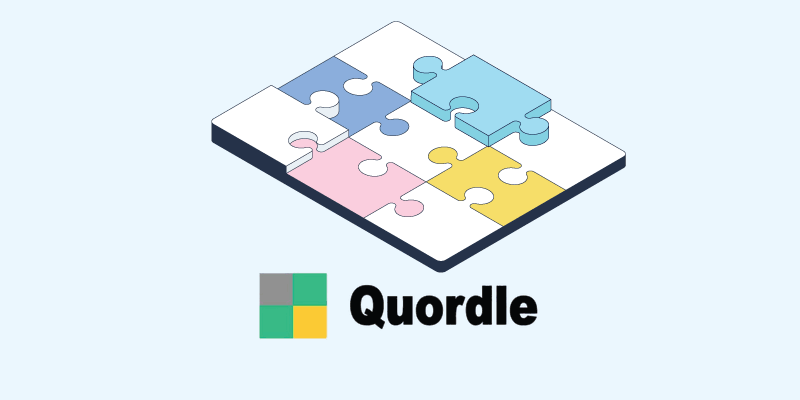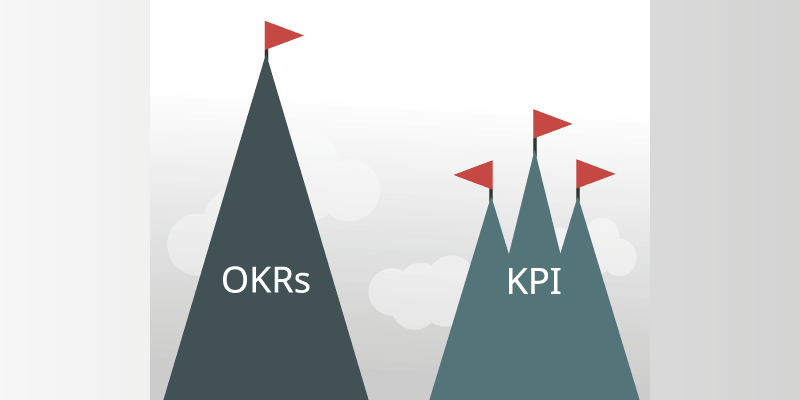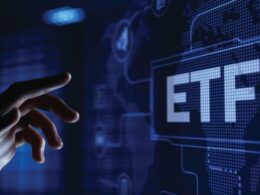What are NFTs? The digital certificate of ownership. Let’s explore.
Non-fungible tokens (NFTs) are cryptographic acquisitions on a blockchain that can be discerned from one another by their unprecedented identifying codes and metadata.
They cannot be bought or swapped for equivalent amounts as cryptocurrencies can.
This contrasts with fungible tokens, like cryptocurrencies, which are interchangeable and can thus be exploited as a medium for business transactions.
Knowledge Of NFTs
The ERC-721 standard was the antecedent to NFTs.
The ERC721 smart contract standard, created by some of the same individuals who created the ERC20 smart contract, outlines the tiniest interface ownership information, security, and metadata required for the trading and allotment of gaming tokens.
The ERC-1155 standard augments the idea by batching many non-fungible token types into a single contract and diminishing the transaction and storage expenditures indispensable for NFTs.
NFTs have a hodgepodge of potential applications.
For instance, they are the flawless means of digitally representing palpable things like real estate and art.
Furthermore, the assets are based on blockchains, and can also be used for identity management or to cut out intermediaries and link artists with audiences.
NFTs can eliminate mediators, streamline transactions, and open up pristine markets.
Collectables like digital art, sports cards, and rarities make up a sizable portion of the present market for NFTs.
NBA Top Shot, a platform for collecting non-fungible tokenized NBA events in the form of digital cards, is arguably the most touted space.
The price of some of these cards has surpassed millions of dollars.
A tokenized version of the first tweet ever, which read “just setting up my Twitter,” was shared by Twitter’s (TWTR) Co-founder Jack Dorsey. The original tweet’s NFT version sold for more than $2.9 million.
Cryptocurrencies can be bartered or swapped for one another, just like traditional currency.
One bitcoin, for instance, is always worth the same as another bitcoin.
The same is valid for ether, where one unit is always analogous to another.
Because of their fungibility, cryptocurrencies are a good preference for a safe medium of trade in digital thrift.
Contrastingly, a non-fungible token can’t be equal to another, which changes the crypto prototype by making each token distinct and irreplaceable.
Because each token holds a distinct, non-transferable essence to tell it apart from other tokens, they have been compared to digital passports and are digital embodiments of assets.
They are also extendable, which means you may “foster” a third, different NFT by mixing one NFT with another.
Point Ponder
Identifiable ownership information is included in NFTs, just like it is in Bitcoin.
Additionally, owners of NFTs have the option of including asset-specific metadata or qualities.
Fairtrade tokens, such as coffee bean tokens, are an example of this type of product.
It is also possible for artists to include their signatures in the metadata of their digital artwork.
The NFTs Impact On The Industry
1. Furniture
What are NFTs in the Furniture industry?
It was in March 2021 when Andrés Reisinger’s “virtual furniture” line made him nearly $500,000. Sofas and chairs of various shapes and sizes are included in this collection.
Virtual worlds and gaming settings can benefit greatly from the usage of computer-generated files for the creation of furniture.
He’s unique in that he aims to eventually transform his virtual furniture into real-world products. As far as the furniture industry goes, this is a big deal.
In the past, a chair would typically take four years to develop, with many rounds of research and development and product testing.
At that point, it’s time to get your product out into the market, which requires a lot of labor, such as sending out press releases, creating marketing collateral, and flaunting at design shows such as New York’s International Contemporary Furniture Fair.
Before going into production, Reisinger posts a rendering on social media to see whether there is enough interest.
However, even while “likes” don’t lead to sales, they can attract a lot of attention from the public.
An armchair inspired by the Hydrangea flower called Hortensia authorized him to raise the money to manufacture it.
He did this by selling tokens (NFTs) of the piece on Nifty Gateway.
Designing furniture from the bottom up, with intake from the chief creative officer, instead of the top-down strategy of market research being translated into ingenious briefs, is what NFTs are all about.
During the pandemic, furniture brands began to clasp computer-generated imagery as design exhibitions and picture studios closed and their audience was hooked to their screens.
An e-commerce site for the popular design video game Design Home was launched, providing a further example of furniture moving digitally.
User purchases can be made on the site, and real Williams Sonoma and Pottery Barn items are used in the game’s challenges.
- In light of the worrisome amount of waste furniture, NFT is responsible for disrupting this business.
- It is assessed that 85 percent of the 13 million tonnes of furniture Americans fling away yearly is deposited in landfills.
- According to a 2023 study, interior design makeovers and restorations account for 42 percent of the building industry’s global carbon emissions.
2. Fashion
In contrast to efficacy, fashion is primarily about self-expression, a means of expressing status, identity, and exclusivity.
What are NFTs in the Fashion industry?
NFTs may provide a means for netizens to signal these qualities in the digital sphere.
Although the luxury brand Gucci hasn’t entered the market directly, it has made progress in recent years by inventing digital goods and settings for games like The Sims and Zepeto.
Lately, it unveiled a $12 pair of virtual sneakers that consumers could buy through its app and use in virtual worlds like the online gaming site Roblox.
Digital shoes may not yet be NFTs, but it won’t be long before Gucci and other premium corporations create NFTs for factual virtual goods or for digital imitations of real goods that customers have purchased, entitling them to import their real-world possessions into games.
3. Social Media
What are NFTs in the Social Media industry?
Individuals and communities can issue their own social tokens, which fall into a wide range of categories.
Besides community token, creator token, and personal token, other terms with similar meanings can be found in this category.
A social token can represent anything from a person’s time to the collective ownership of a community to a specific level of admission to a piece of material.
A crypto social network called BitClout uses NFTs to construct Creator Coins that exemplify a popular celebrity like Elon Musk, and the value of these coins swings depending on whether or not that celebrity does something nice or negative with their content.
4. Real Estate
What are NFTs in the Real Estate industry?
Since crucial documents are frequently falsified, the real estate industry is frequently perceived as being complex and requiring a great deal of trust.
NFTs, which may be used to trace and track ownership and validity of the digitally represented asset from anywhere in the world, have the potential to transform all of that.
By utilizing smart contracts on the blockchain, the US-based protection business Propy is revolutionizing home purchases all over the world.
Another field that is quickly gaining acceptance from the general public is virtual real estate.
One report projects that the global market for augmented and virtual reality would reach US $571.42 billion by 2025, expanding at a CAGR of 63.5 percent between 2018 and 2025. Estate 331, also known as “The Secret of Satoshi’s Tea Garden,” was sold for about US$80,000 in the spring of 2019.
It is a virtual piece of land in a virtual world that can only be accessed through a computer.
In 2021, a land parcel on the gaming and virtual real estate platform Axie Infinity was sold for the astounding US $1.5 million. This pattern is only expected to pick up speed.
Another kind of NFT known as “real value” NFT is distinguished by the fact that its value is linked to certain off-chain assets.
These NFTs might stand in for ownership in anything from a contract transferring ownership and royalties of music to actual physical assets like real estate, vehicles, and other assets.
These NFTs can be approximated to stablecoins because stablecoins’ value is backed by US dollars that are kept by the issuing corporation.
5. Gaming
What are NFTs in the Gaming industry?
NFTs offers a great deal of expansion potential inside the gaming sector due to cryptocurrency gaming.
Partaking in cryptocurrency games entitles players to acquire and trade virtual products from any place.
As you may anticipate, NFTs contribute greatly to the expansion of these types of games.
Early versions of cryptocurrency games, such as CryptoKitties, centered on unique cat collectibles and allowed users to acquire, purchase, sell, and trade these NFT “kitties” Over time, however, NFTs have begun to have a greater impact on this market by allowing in-game items to have real-world value by enabling scarcity, considerable rewards, and competitive advantages.
AnRKey X is one of the most intriguing members of this new generation of video game producers.
The group has developed gDEX (Decentralized Finance Gaming Platform Exchange), a protocol that blends competitive esports, harvest farming, and NFTs into what they term MSports (Money Sports).
This enables gaming teams to fight for yield, with NFTs featuring prominent in-game characters delivering useful enhancements to increase APYs.
This industry is attracting a great deal of interest since it gives in-game objects a distinctive value outside of the game ecosystem while also furnishing a robust application for NFTs in games.
6. E-commerce
What are NFTs in the E-commerce industry?
E-commerce is another market where NFTs can be triumphant.
In an era where market dominance is being exploited by industry titans such as Amazon, a suburbanized environment fueled by NFTs may return control to customers and businesses.
Splyt, a decentralized inventory platform, is at the forefront of this movement.
Splyt’s eNFT (e-commerce NFT), which tokenizes off-chain commodities on the blockchain, establishes a global, standardized mechanism for how data and payments are sent securely between all parties in e-commerce transactions.
Boston Protocol is also one of the start-ups in this industry.
The company has developed blockchain technology that facilitates the exchange of digital assets for tangible products.
Conclusion
Through NFTs, we have already glimpsed the current state of affairs, but as more parties enter the market, the substantial portrayal will prevail.
Some incredible usage cases may fundamentally alter how we communicate with brands, celebrities, and each other online.
Imagine coming to a performance, exhibition, or concert and leaving with a one-of-a-kind memento.
Or conceivably having a set of limited-edition clothes from your favorite designer that you can use for both your online personas and your games.
We might even witness a time when NFTs allow ownership of offline assets like your house or car to be transferred on-chain.
This is a very intriguing area where content reigns supreme.
Dive into the vibrant world of digital art by exploring the latest NFT art trends.
















